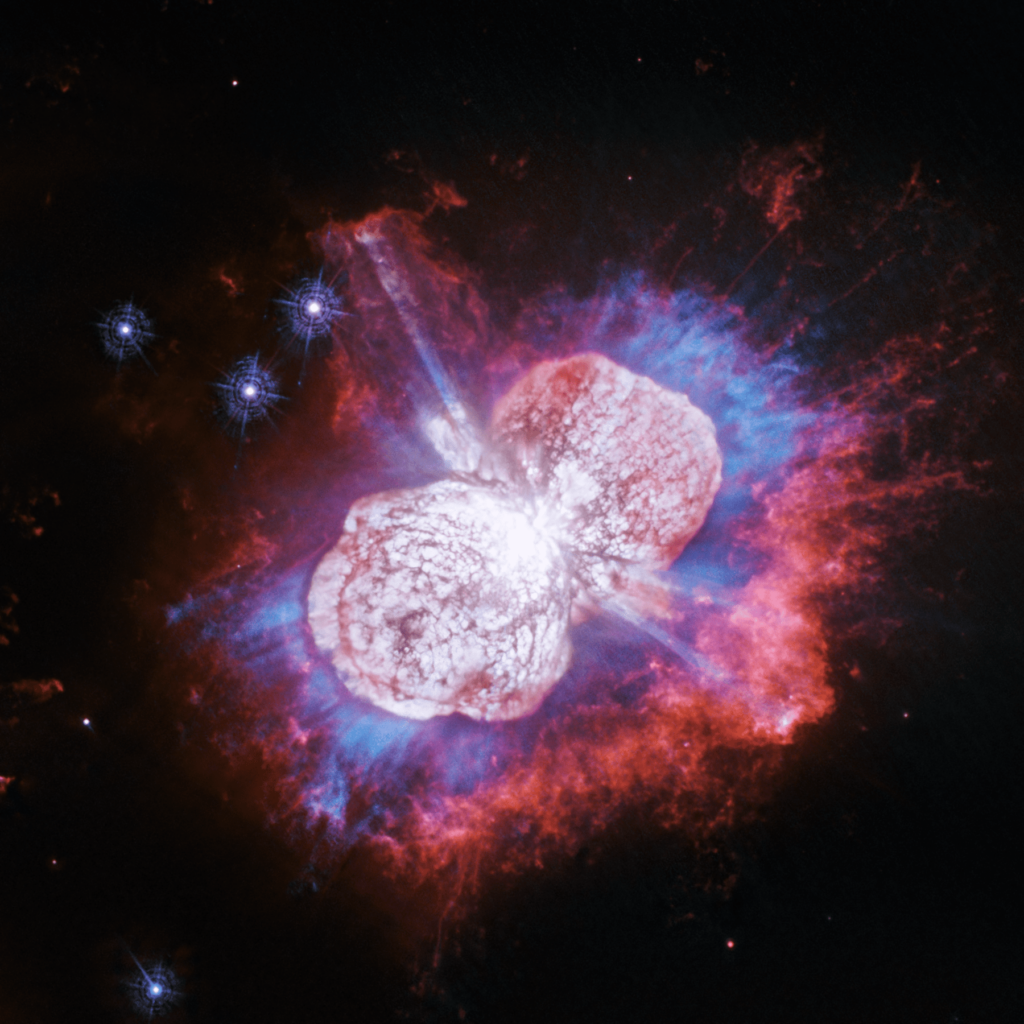Using data collected by the Chandra, Hubble and XMM-Newton space telescopes, astronomers have created a video dedicated to the consequences of the “Great Eruption” of the Eta Carinae system. It demonstrates how the material of a stellar eruption that occurred 180 years ago continues to scatter through space at a speed of 1250 km/s.
“Great Eruption” of Eta Carinae
Eta Carinae is one of the most famous variables in the history of astronomy. It consists of two massive stars. The mass of one of them is 90 times, and the other is 30 times greater than the solar one. At the beginning of the XIX century, the brilliance of Eta Carinae began to increase rapidly. By 1843, it had become the second brightest star in the night sky after Sirius. Astronomers called this event the “Great Eruption”. However, it did not shine for long; after a few years, the brightness of the star began to decrease. Now it is on the verge of being visible to the naked eye.

In the XX century, astronomers discovered that Eta Carinae are surrounded by a bipolar nebula, called a Homunculus. It consists of matter ejected by the star during the “Great Eruption”. It is now believed that during those events, the star ejected a mass 10 to 45 times greater than the solar one.
In the XX century, astronomers discovered that Eta Carinae was surrounded by a bipolar nebula, called a Homunculus. It consists of matter ejected by the star during the “Great Eruption”. During those events, the star ejected a mass 10 to 45 times that of the sun.
Consequences of a stellar eruption
The Homunculus nebula is still expanding, as its images taken in different years demonstrate. Researchers from NASA decided to visualize this process. For this, they used images taken by the Chandra X-ray telescope in the period from 1999 to 2020. The images were supplemented with data collected by the Hubble and XMM-Newton orbiting observatories.
The video demonstrates the process of gradually changing the shape of the Homunculus nebula. It also shows the surrounding X-ray ring (orange color). It was discovered about fifty years ago. In its center are two massive stars of the system (blue color). They are a powerful source of X-rays and are too close to each other to be seen separately.
During the observations, Chandra also discovered a faint X-ray envelope located outside the nebula. Since they have a similar shape and orientation, the researchers conclude that both structures have a common origin. It is assumed that this is the material that was ejected by the star between 1200 and 1800 years. When the blast wave from the “Great Eruption” reached it, it heated up and lit up in the X-ray range.
According to https://www.nasa.gov
Follow us on Twitter to get the most interesting space news in time
https://twitter.com/ust_magazine
